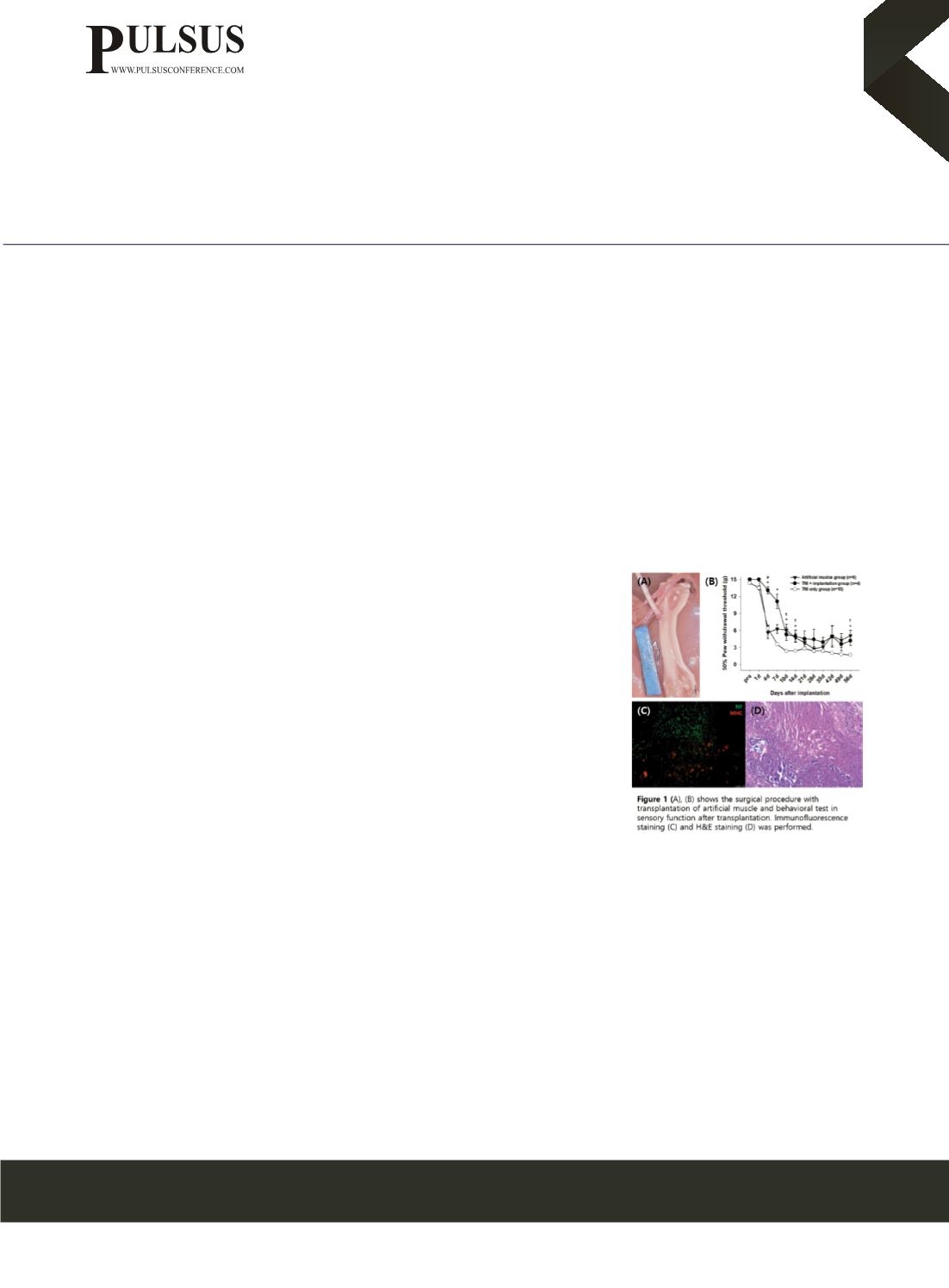

Page 33
December 9-10, 2019 | Barcelona, Spain
Volume 14
ARTHRITIS AND RHEUMATOLOGY
ANATOMY AND PHYSIOLOGY
13
th
International Conference on
3
rd
International Conference on
&
Journal of Orthopaedics Trauma Surgery
and Related Research
Rheumatology Congress 2019 & Anatomy and Physiology 2019
December 09-10, 2019
J Orthop Trauma Surg Rel Res, ISSN: 1897-2276
Evaluation of biocompatibility and myogenic differentiation of the transplanted
myoblast using 3D cell printed muscle construct in rats
Jinju Kwon, Dongyeon Nam, Jinseung Lee, Junesun Kim
Korea University, South Korea
S
evere skeletal muscle loss and long-term denervation lead to an irreversible degenerative process. In this regard, the
development of engineered skeletal muscle including fusion of myoblast have investigated to promote muscle regeneration
and functional recovery of injured muscle tissue. However, further researches are needed to mimic the structure and function
of native muscle. In this study, we investigated 1) the differentiation of transplanted myoblasts (C2C12) using 3D cell printed
muscle construct and 2) the aspect of behavioral changes in sensory and motor function after transplantation. 3D cell printed
muscle (Artificial muscle) was constructed by printing of myoblast-encapsulated muscle decellularized extracelluar matrix
(mdECM) bioink in nanofiber structure. To transplantation, artificial muscle was fixed to the gastrocnemius muscle. Tibial
nerve transection was performed, and then the proximal end of transected nerve was
implanted into artificial muscle (artificial muscle group) and into the gastrocnemius
muscle (nerve implantation group) in male Sprague-Dawley rats. Behavioral test for
mechanical sensitivity of the hind paw and motion capture to quantify motor function was
conducted before and after artificial muscle transplantation. Immunohistochemistry was
performed at the implanted nerve-muscle junction to confirm viability of transplanted
muscle construct and differentiation of myoblasts. After implantation, paw withdrawal
threshold was significantly decreased in both of the nerve implantation and the artificial
muscle group. But it was still higher compared to those of tibial nerve injury only. Rats in
both nerve implantation group and artificial muscle group showed a similar pattern with
the increased range of motion (ROM) in knee joint while ROM in ankle joint decreased.
Distance of strides did not show any significant changes in both groups. The present results
demonstrated that the potential for myogenic differentiation of transplanted myoblasts.
It suggests that possibility of creating customized functional muscle substitutes for the
therapeutic treatment of the muscular injuries.
Biography
Junesun Kim is P.T. and Ph.D. in Physiology. She is a professor at Department of Physical Therapy Korea University College of
Health Science. Her major fields of academic interest are the peripheral and central mechanisms of chronic pain, and regenerative
mechanisms governing spinal cord injury. She has several publications in in peer-reviewed journals. She provides continuing education
lectures regarding neurological physical therapy for SCI and mechanisms of chronic and pathologic pain to student majoring in
rehabilitation science at graduate program.
junokim@korea.ac.kr















